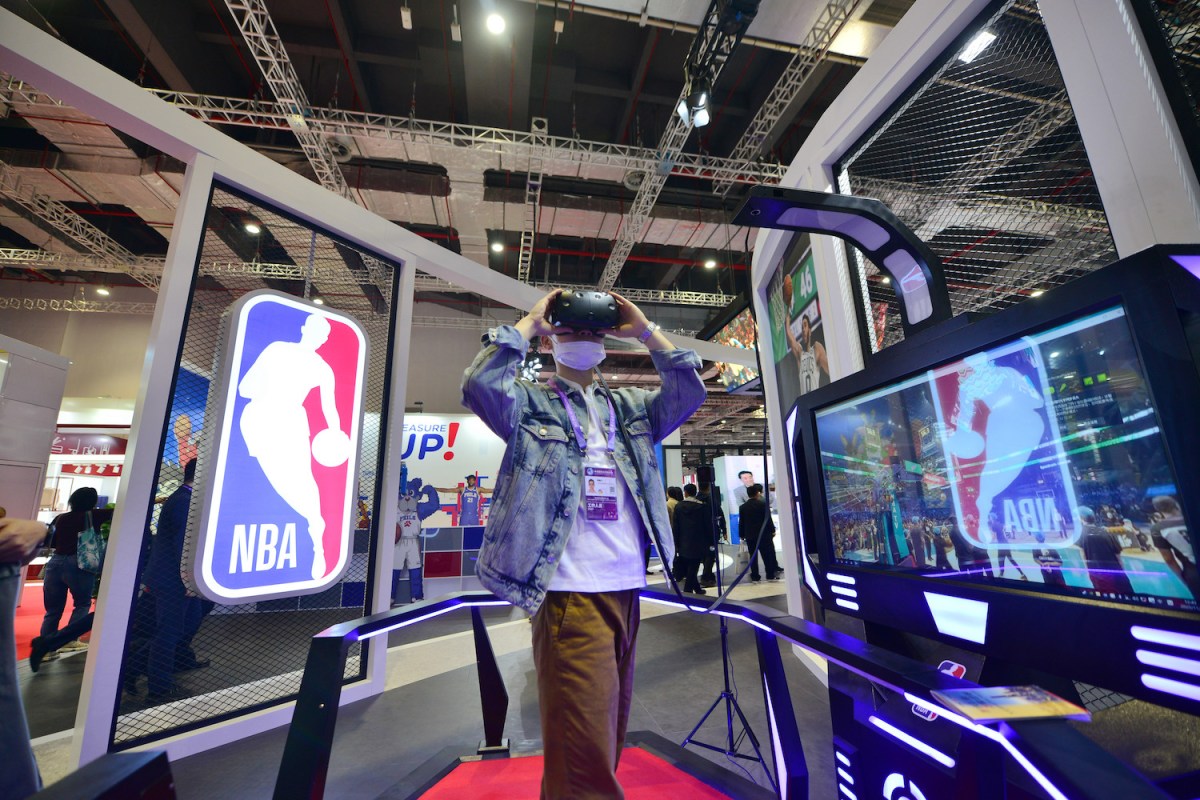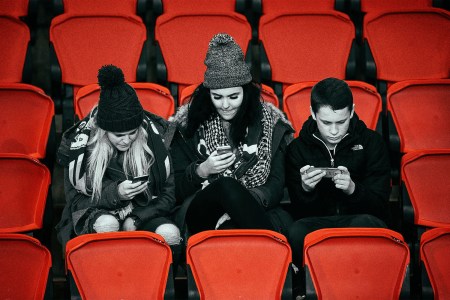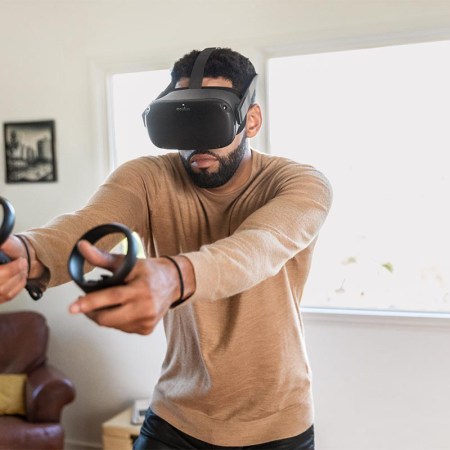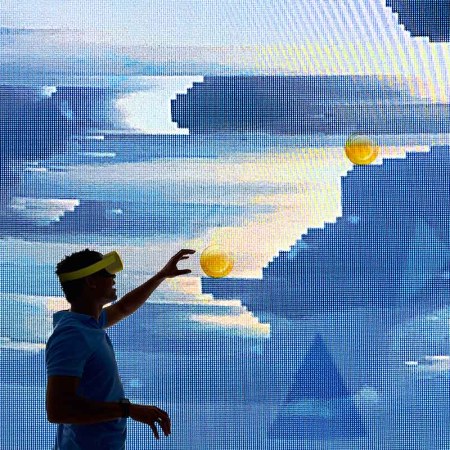In 2021 I wrote an article about the concerns that U.S. pro sports leagues might have about engagement (or lack thereof) from young people. While the representatives I spoke to played it cool, saying reports of Millennial and Generation Z disinterest in sports were much ado about nothing, they still discussed league initiatives designed to attract and retain them as fans.
The NBA just launched a big one last month, and it’s already getting rave reviews from people who probably still have enviably full heads of hair.
When the New York Knicks played the Boston Celtics on February 27, a group of Syracuse students watched the game in a university library. Strapped to their heads were virtual reality headsets, the Quest 2 models from Meta that retail for $399. The immersive, 180-degree viewing experience was also powered by the virtual reality sports hub app Xtadium, built by YBVR.
According to a Sportico column written by the students’ professor, sport management instructor Rick Burton, the college kids loved it. Apparently out of earshot of any librarians, Burton heard responses like “This is cool,” “Oh my God,” “I’m so close,” “Wild,” “Awesome” and “What just happened?” among many other similar refrains.
“For most basketball-loving North Americans, this late February game between two rivals was nothing more than a precursor to a possible playoff battle after the regular season ends April 9,” Burton wrote. “For sports technologists and futurists, however, the game provided yet another milestone in the race to completely disrupt traditional broadcasting.”
Why Do So Many Young Americans Hate Sports?
Market data paints a grim picture for the future of pro sports. In league offices around the country, the campaign to secure it is well underway.If pro sports leagues like the NBA want to keep fans, especially young ones, interested in their product, that’s exactly what they’re going to have to do. But they don’t need me to tell them.
A month before Burton’s library experiment, the NBA and Meta announced a multi-year extension of its partnership. Part of the deal meant that 52 live NBA games would be presented in Meta Horizon Worlds’ “NBA Arena,” five of them in 180-degree monoscopic, 2880-resolution VR.
“Our extended partnership with Meta will provide more immersive and innovative ways to experience the NBA,” said Jennifer Chun, NBA executive vice president and head of content partnerships, in a press release. “Meta’s digital world opens up exciting possibilities for NBA fans to virtually attend our games and to interact with other fans around the world.”
Burton wrote in his column that he believes the Knicks-Celtics game his students watched was the first such game. While they generally praised the experience, they did do a little bit of nitpicking.
“The hardware technology is not comfortable enough for consistent long viewing,” said sophomore Stevie Chuck, “but as the hardware and software improves, immersive viewing will become a much more viable option. This could be the future of portable viewing. Instead of teens pulling out their phones to stream games, I see them streaming an NBA game in VR. That is, when the hardware becomes more accessible/affordable.”
Details like those will get worked out eventually, which Burton wrote will help bring the tech-based experience closer to “the Gladwellian tipping point” — a reference to a Malcolm Gladwell book — of mass adoption.
While the tech will certainly attract NBA fans of any age, young people in particular have their own set of expectations for sports-watching and other types of sports engagement. Per expert sources in my 2021 article, Millennials and Gen Zers, who’ve spent most or all of their lives in a highly digital world and with more intimate access to sports stars (or at least the impression of it) via social media, appreciate personalized experiences in sports viewership and human interest stories in sports coverage, creating a deeper connection to athletes. They also appreciate data integration and betting opportunities.
And though the radio may be going the way of the dodo, it’s worth recalling that at one point it, too, was cutting-edge technology. As I noted previously, “When radios began to make their presence felt in American homes back in the 1920s, Major League Baseball balked at the idea of broadcasting games across the airwaves, out of fears stadium gate revenue would suffer.” But eventually owners recognized the promotional power that resided in radios and, later, MLB would leverage the television to bring baseball to fans who’d never seen a game in person.
Now Meta founder Mark Zuckerberg and NBA Commissioner Adam Silver are exploring the frontier of an even more powerful sensory experience in sports-watching. VR is just the next big thing, at least according to a bunch of emerging adults, the future of our race, who should be more quiet in libraries.
The Charge will help you move better, think clearer and stay in the game longer. Subscribe to our wellness newsletter today.


















